|
|
|
Upon opening the wing, I found one brace had failed just a head of the corner cross brace and the other had failed at the tube surface that contacted the inside of the main spar. I concluded that the braces had been placed in high compression load after the fabric had been shrunk. Due to the small diameter relative to the length, I believe the tube buckled out of column. By doing so it allowed the tube to vibrate like a violin string in response to any vibration input to the wing. In time the tube went into fatigue failure. |
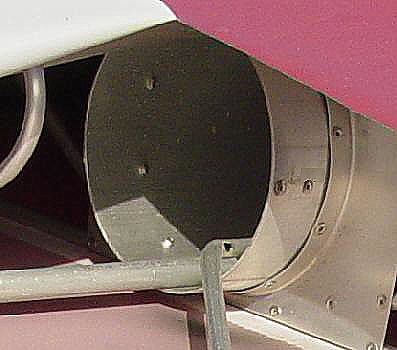 One can see here that the brace had been operating in the compressed mode, and the rivets were in tension. As the brace vibrated it slowly worked the material around the tube rivet holes. And, finally the 0.035 inch thick wall failed due to fatigue and allowed the brace end to fall free.
One can see here that the brace had been operating in the compressed mode, and the rivets were in tension. As the brace vibrated it slowly worked the material around the tube rivet holes. And, finally the 0.035 inch thick wall failed due to fatigue and allowed the brace end to fall free.
|
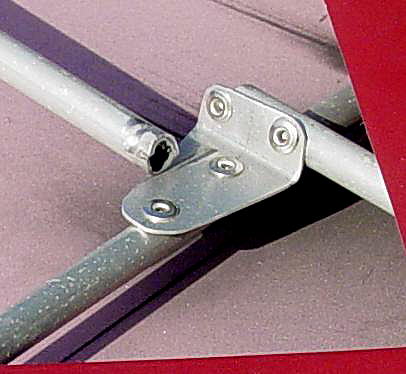 The right brace failed though the rivet hole on the cross brace bracket.
The right brace failed though the rivet hole on the cross brace bracket.
|
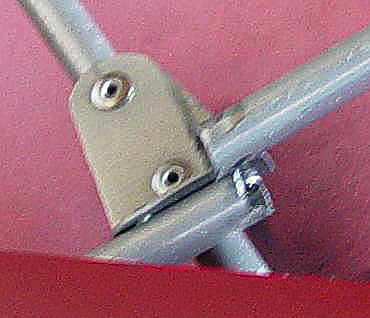 Not the best photo, but it illustrates the degree of compression the brace was under. The overlap appears to be about one-eighth of an inch. This leaves no doubt that the brace was bowed out of column making it very susceptible to vibration.
Not the best photo, but it illustrates the degree of compression the brace was under. The overlap appears to be about one-eighth of an inch. This leaves no doubt that the brace was bowed out of column making it very susceptible to vibration.
|
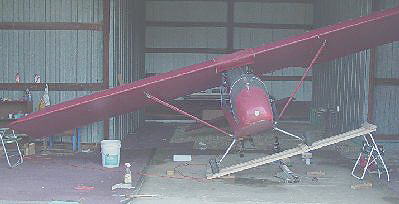 To make it easier to work on the wing tips, a two by four cradle was used to tip the FireFly, so that one could work standing or sitting as desired.
To make it easier to work on the wing tips, a two by four cradle was used to tip the FireFly, so that one could work standing or sitting as desired.
|
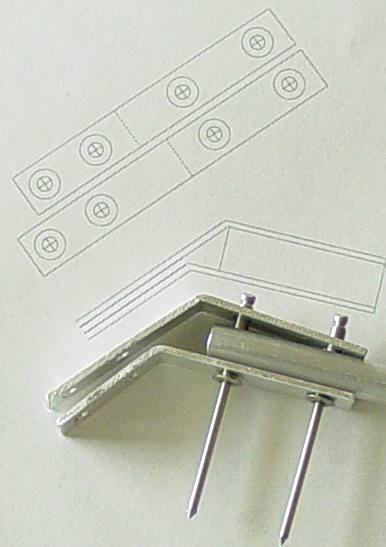 To enable using the broken parts and to improve attachment strength to the main spar, two brackets were designed to fit on each side of the tube and on the inside and outside of the spar. This ensures that the rivets have good purchase power through a thickness that will not break in fatigue. Also, the end of the tube was filled with JB Weld so that the tube can not compress as the rivets were seated.
To enable using the broken parts and to improve attachment strength to the main spar, two brackets were designed to fit on each side of the tube and on the inside and outside of the spar. This ensures that the rivets have good purchase power through a thickness that will not break in fatigue. Also, the end of the tube was filled with JB Weld so that the tube can not compress as the rivets were seated.
|
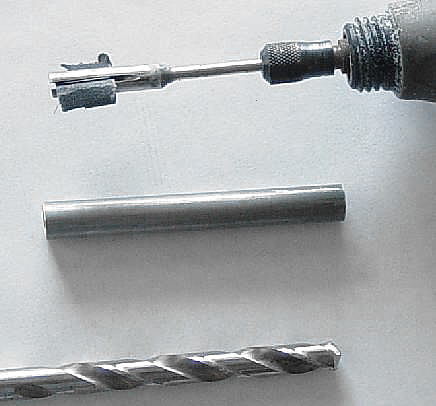 A sleeve was made from larger OD tubing. The ID was drilled out to 5/16 of and inch. This drilling is not easy. If one goes slow it can be done. After drilling the 5/15 inch OD tubing will not slip through due to burrs inside the sleeve. One must be careful not to force the parts together as they will gall before you can get them into the desired position. To alleviate this problem, I made a little tool for a Dremel tool that lets one polish the splice bore until the desired sliding fit is achieved.
A sleeve was made from larger OD tubing. The ID was drilled out to 5/16 of and inch. This drilling is not easy. If one goes slow it can be done. After drilling the 5/15 inch OD tubing will not slip through due to burrs inside the sleeve. One must be careful not to force the parts together as they will gall before you can get them into the desired position. To alleviate this problem, I made a little tool for a Dremel tool that lets one polish the splice bore until the desired sliding fit is achieved.
|
 The polish tool was made from the longest tool mandrel I could find, some scrap tubing, and JB Weld. the slot was cut with a thin abrasive wheel.
The polish tool was made from the longest tool mandrel I could find, some scrap tubing, and JB Weld. the slot was cut with a thin abrasive wheel.
A piece of emery cloth was cut to fit the depth of the slot. Then the emery cloth strip was folded and inserted into the slot and trimmed so that the cloth could be folded around the slotted tube and slide inside the splice. When the Dremel tool is powered up the ends fly out and polish the splice ID. One can polish from one end to the middle and stop every so often to check for the proper fit. Then repeat the process until the spice slides over the tubes to the desired points. One must continually blow out and wipe the tubes down to prevent them from galling. Slide together until resistance is felt, note the position, remove the tube and start polishing at that point onward, and repeat. |
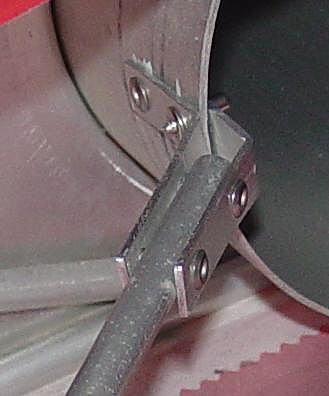 Repair at the spar tube.
Repair at the spar tube.
This method of using double surfaces and long rivets quadruples the rivet shear strength. |
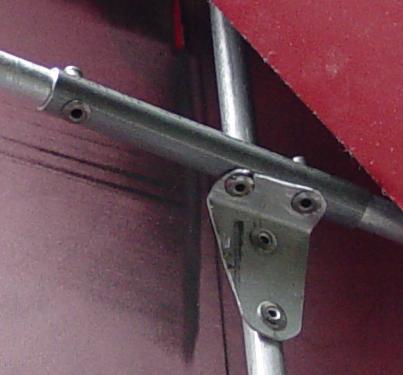 Splice at cross bracket.
Splice at cross bracket.
The opposite side was repaired the same way. Since the fabric has already shrunk, I consider this to be a permanent fix. If I was building a new wing, I would use a much larger thin wall tube for this brace, or I would add a 1/2 inch aluminum angle to the 5/16 inch OD tube with rivets every six inches to keep the tube in column. |
 When ever I wash the FireFly, I slap the wing tips and listen for a rattle which would indicate something loose in the wing. After 749 flights and 268 flight hours, I discovered the right and left outer wing braces had broken.
When ever I wash the FireFly, I slap the wing tips and listen for a rattle which would indicate something loose in the wing. After 749 flights and 268 flight hours, I discovered the right and left outer wing braces had broken.